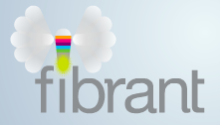Salisbury's Fibrant network, a muni FTTH network in North Carolina that is approaching its one year anniversary, has decided to celebrate by ordering 5,000 set-top boxes. Because the order was so large and only available from a single vendor due to software issues,
City Council had to approve the deal.
The city will order 5,000 additional set-top boxes for Fibrant at the discounted price of $721,572…
Fibrant’s original inventory of 5,000 set-top boxes purchased in March 2010 is running low, Behmer said. The city’s new broadband utility, which sells Internet, cable TV and phone services to Salisbury residents, has about 1,200 customers and averages about three set-top boxes per home, he said.
This is a reminder of the economics of these networks. Each set-top box costs something like $150. Household that subscribes for television service average 3 set-stop boxes, meaning that the cost of those boxes
alone is about $450 of loss to Fibrant before the subscriber pays a dime to Fibrant.
This is why muni networks take so long to break even. The additional install costs like the equipment on the side of the house and the labor to set everything up grow quickly -- often to between $1200-$1500 per subscriber. It takes years to pay down those costs, plus the interest of borrowing to build the network.
So when you hear that a community network is running in the red in year 3, you should say, "Duh." Infrastructure often takes a long time to pay off, which is one of the main reasons the private sector does such a poor job of providing it.



 The goal is ultimately to connect everyone -- residents and businesses -- with the best network possible, allowing independent ISPs to offer services. However, this approach is somewhat new, with a lot of diverse stakeholders trying to work together so it will undoubtedly be a project to watch and learn from.
Follow the project and
The goal is ultimately to connect everyone -- residents and businesses -- with the best network possible, allowing independent ISPs to offer services. However, this approach is somewhat new, with a lot of diverse stakeholders trying to work together so it will undoubtedly be a project to watch and learn from.
Follow the project and 